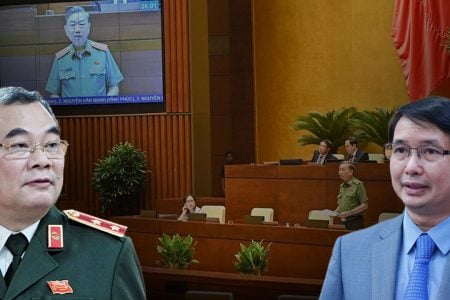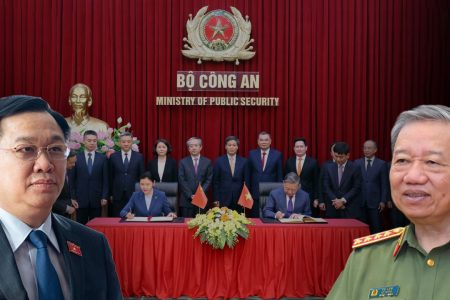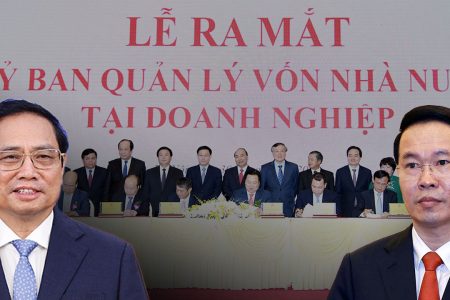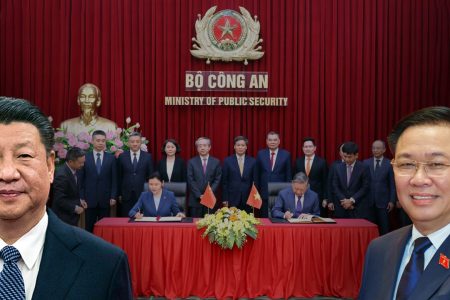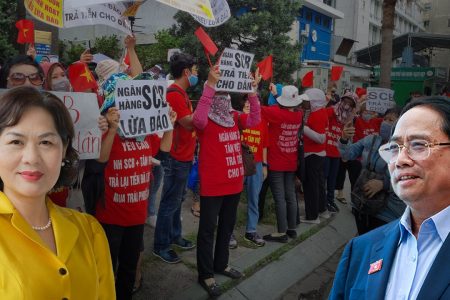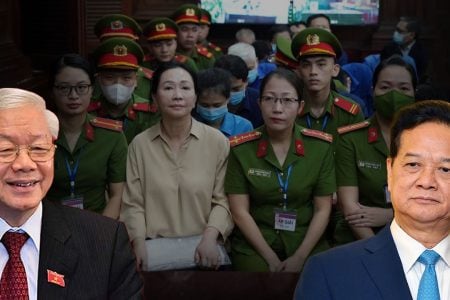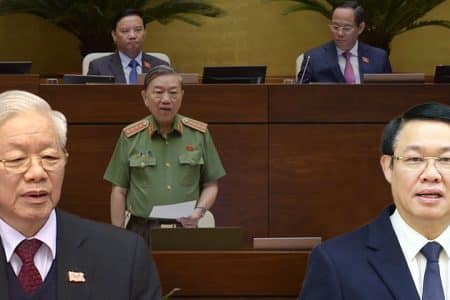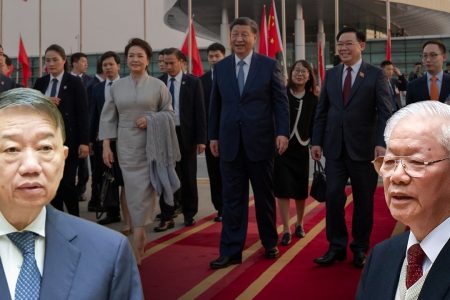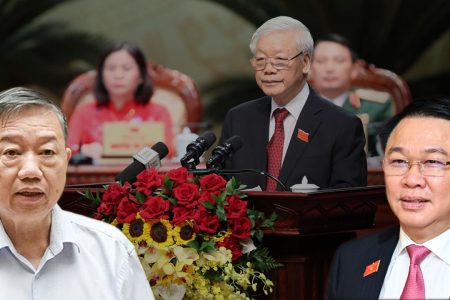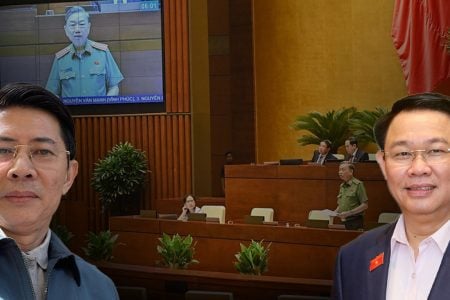Crude oil price plunged to a record 4-year level, plummeting from March 9 to less than 40% compared to the average price throughout last year which is expected to be a great loss for Vietnam oil and gas industry. Not only that, Vietnam Oil and Gas Group PVN also faces a greater risk when oil and gas reserves exploited from the main traditional fields of Vietnam are now declining after 20-30 years of exploitation. State budget revenues are threatened by a serious decline and are expected to be exhausted this year when the Wuhan flu is expected to last for more than 6 months and the consequences continue to affect the whole year.
Specifically, the oil fields that PVN considers to be the main tradition include Bach Ho, Su Tu, Rang Dong, and Lan Tay. These are oil fields which are said to contribute an important output, providing nearly 600 million tons of oil and gas equivalent in recent years.
Facing increasing difficulties of declining oil and gas reserves, PVN said that it would invest in more technological solutions to recover the oil in the above mentioned fields.
In addition, PVN will also diversify domestic investment sources as well as continue to attract foreign investment, promoting the search and exploration activities in traditional areas and deep-water areas, even offshore. right when there is a favorable opportunity.
However, PVN is facing difficulties because the mechanism and policies for the oil and gas industry have not changed timely. Specifically, there are many provisions in the laws on oil and gas activities that are not suitable for the context of international economic integration, fluctuations of the world economy, politics and petroleum in the world and in the region.
PVN is also in a serious shortage of investment capital, many important development projects are behind schedule. The reason is said that due to the exploration process and exploration costs need a lot of investment but in recent years has remained at a record low.
In addition, tensions with China in the East Sea (South China Sea) which has significant oil and gas lots in Vietnam, also affected Vietnam’s oil and gas production, according to PetroVietnam’s comments last year.
PetroVietnam said that the tensions will affect the ability of Vietnam to attract foreign investment into oil and gas exploitation.
A recent report by the Ministry of Industry and Trade of Vietnam shows that oil production in Vietnam is depleting, while the coal-mining industry is facing many difficulties.
The report on the industrial production situation of the Ministry of Industry and Trade shows that crude oil exploitation output in the last 10 months was estimated at over 11 million tons, down 5.6% compared to the same period last year; natural gas exploitation output was estimated at 8.6 billion m3, increasing by 1.9% over the same period last year.
According to information from the Ministry of Industry and Trade published in the domestic media, the oil and gas exploration and exploration activities continued to be carried out as planned. However, oil exploitation in key fields in 2019 is in a period of decline, output is sharply reduced, newly discovered fields are quite small, marginal, development conditions, complex operation, costs. high…
According to a report by PetroVietnam at the end of last year, depleted oil, lack of investment capital and new exploitation will make Vietnam’s crude oil production decrease by 10% per year from now until 2025.
Statistics of the General Statistics Office show that Vietnam’s crude oil production last year averaged about 247,000 barrels a day, down nearly 12% a year.
In 2019, Vietnam had to import crude oil from the US. The first batch of crude oil PetroVietnam imported from the United States was 950,000 barrels from the US West Texas Intermediate. Experts say that Vietnam is likely to import more crude oil from the US
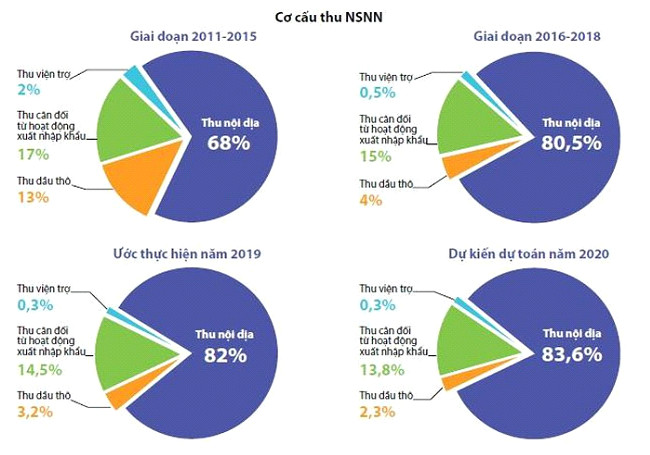
Revenue from crude oil of Vietnam decreased by 800% compared to the years 2000 to 2008, when the revenue from crude oil accounted for 30% of the budget. From 2009 to 2015, although the proportion decreased, but revenue from crude oil was still at double digits, an average of about 12%.
In 2018, crude oil revenue was only VND59.4 trillion, accounting for 4.7% of state budget revenue.
By 2019, the proportion of revenue from crude oil will be only 3.8% of the state budget revenue. Compared to the golden period of 2000-2008, the proportion of revenue from crude oil has decreased by 800%.
In terms of absolute value, 5 years ago, total revenue from crude oil in 2014 was VND107 trillion dong, 2 times higher than 2018.
In addition, the significant decline in crude oil prices is also a matter of concern. Crude oil price before 2013 was around $90/barrel, from 2014 to now, the average price is about $60/barrel. Recently, oil prices have fallen to only $23/barrel due to the impact of the flu and the possibility of this will be prolonged because the aviation and transportation industry will continue to stagnate due to the import ban and blockade of many countries all over the world.
Many experts affirm that with the current oil price, it is better to consider stopping the exploitation to avoid losses compared to operating costs.
Paradoxically, although coal mining has increased, Vietnam still has to import coal to supply to thermal power plants. According to the General Statistics Office, in the first 5 months of 2019, Vietnam imported more than 17 million tons of coal, an increase of more than 103% compared to the same period last year. The largest coal supply markets for Vietnam are Australia, Indonesia, Russia, China, Japan, Malaysia and the US.
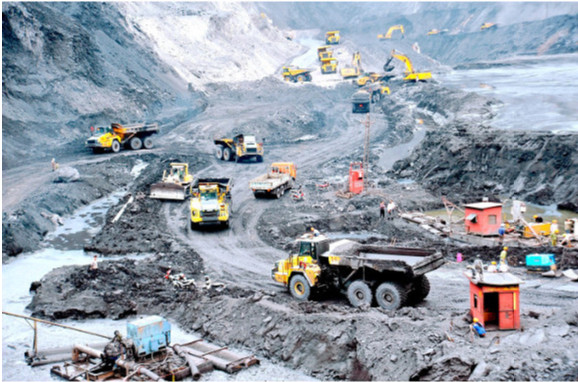
Regarding coal mining, the Ministry of Industry and Trade said that the output of clean coal in the first 10 months was estimated at nearly 38 million tons, an increase of more than 10% over the same period last year.
However, Vietnam’s coal industry is facing difficulties such as mining conditions of mines are increasingly deeper and farther away, increasing the transport costs, the coefficient of removing soil and rock for mines increase in open air, increased pressure of large mines- increase exploitation costs.
Coal is an important raw material in Vietnam’s electricity industry. By 2020, Vietnam’s electricity generation is forecast to account for 41% of total electricity supply and Vietnam will need about 54 million tons of coal for thermal power plants each year.

In order to ensure sufficient coal for production, the Ministry of Industry and Trade has directed major coal-producing enterprises to continue promoting technological innovation in coal production stages; apply mechanized mining technology, coal mining in mining technical conditions to improve labor productivity.
As for coal for electricity generation, the Ministry of Industry and Trade directs investors of power plants to urgently sign coal trading contracts in 2020 and long-term contracts with coal suppliers as the basis for making and approving the coal supply chart for coal production. electricity production by 2020.
Vietnam is in danger of exhausting its budget revenue sources for 2020 when the Wuhan Flu pandemic hits the world.
In the middle of 2019, the collected revenues decreased, only the land use levy, import tax, and crude oil revenue increased.
In early 2020, the situation of budget revenue is seriously threatened from all directions.
Customs statistics show that import revenue in February 2020 decreased sharply compared to the same period last year due to the impact of the Wuhan-China flu pandemic.
According to the survey, the current situation of import and export activities in Ho Chi Minh City ports is only about 30% compared to the same period last year and it is expected that the situation will get worse when the whole world has an pandemic control cluster.
In terms of revenue from land use fees, it is also likely to decline greatly while there are very bad forecasts for the real estate business in Vietnam.
Dr. Vu Quang Viet, an economist who used to work at the United Nations Statistics Office, said in early March that the real estate market in Vietnam would be affected by the Covid-19 pandemic. He emphasized: “Real estate investment from abroad in Vietnam is likely to decline. Therefore, the real estate sector will be extremely difficult. So some ‘giants’ in this industry will go bankrupt and will drag Vietnam’s financial crisis.”
The press also cited the Department of Business Registration Management, which recorded that the total number of dissolved real estate enterprises had the highest growth rate, approximately 54%. The agency also forecasts that some real estate businesses will go bankrupt and disappear from the market.
Local media reported on March 17 that there were about 300 real estate trading floors closed and about 500 trading floors temporarily suspended. The media, quoted by the Vietnam Real Estate Brokers Association, said the number of closed floors was due to the investor not opening the sale of products and some of the floors were still active because there were still goods for sale and a contract was signed with investor.
Regarding land use levies, in October 2019, the government headed by Prime Minister Nguyen Xuan Phuc amended the old decree, whereby the debts of the old land use levies were collected more aggressively. Households who owe land use fees must pay debts before transferring, giving, donating, mortgaging or contributing capital.
Recently, in response to the reduction of budget revenue, the government has increased electricity bills, with the current revenue decline, the mine is the last currency of the people to be collected and raise tax fees. The tax authorities will aggressively debt and squeeze businesses.
This is not to mention the situation of mangroves in the Mekong Delta, not only the loss of agricultural and aquatic products but also a lot of budget to cope.
With the price of oil down to only $20/barrel, the continued exploitation of oil and gas will add losses, plus the Wuhan flu pandemic making the economy paralyzed – unemployment rampant across the country, causing difficulties for Prime Minister Nguyen Xuan Phuc to follow the dreamed socialist orientation of General Secretary Nguyen Phu Trong at the end of his life.
Hoang Lan from Hanoi – Thoibao.de (Translated)




